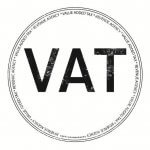 As someone who works with thousands of Amazon sellers, I’ve never seen 3 little letters cause as much confusion and terror as VAT (well, maybe IRS, but that’s something for a different blog post).
As someone who works with thousands of Amazon sellers, I’ve never seen 3 little letters cause as much confusion and terror as VAT (well, maybe IRS, but that’s something for a different blog post).
I often hear sellers use a lack of understanding of VAT as a reason to not sell internationally. And there’s no excuse for that. VAT isn’t rocket science and it isn’t something to be terrified of.
Keep reading to understand what VAT is and why it’s simpler than you might think.
What the heck is VAT?
Most purchases that you make in the European Union (EU) have a built-in value-added tax. Compared to the sales tax in the United States, which is collected on retail sales at the time of the sale to the final consumer, VAT is imposed on sales of goods and services, on each stage of the supply chain, and finally charged in full to the final customer. VAT is charged on both import and inland goods.
What’s interesting about the VAT system?
European and non-European countries have adopted this VAT system that is harder to evade and distinctly different from the sales tax because it implies an indirect taxation at different stages of production.
This transparent and unbiased taxation system has lead VAT to be one of the most reliable revenue raisers for these countries.
An example of how it works
Let’s say an Amazon seller sells a CD on Amazon.co.uk for £36.
First, that CD was first produced by a label company and sold to a distributor for £10 plus 20% VAT, that is £12.
The distributor then sold it to the Amazon seller for £20 + 20% VAT, meaning £24.
The Amazon seller sold the CD to the end customer for £30 + 20%, £36
Value Added Tax cycle explained in 3 easy steps
- You pay VAT on the items or services you buy.
- You charge VAT on the items/services you sell.
- You level the balance with the country’s Revenue Agency.
Let’s look at the distributor above. She paid £2 VAT when he bought the CD. She then collected £4 VAT when she sold the the CD to Amazon seller. That means she needs to pay £2 to the Revenue Agency to even things out.
That’s it. See, Value Added Tax isn’t anything to be afraid of!
Do you have a question? Shoot us an email at services@SellerEngine.com and we’ll try to answer it.
Need help to register for Value Added Tax? Visit Meridian Global Services for expert advice.






2 Responses
Do you have to charge VAT on the postage for the products sold on Amazon?
Hi Jessica,
Thanks for the comment. The European law says you need to charge VAT for postage, however the VAT rate should be the same as the one you apply to your products. For instance if you sell a book on Amazon.co.uk VAT is 0, therefore VAT is 0 for shipping as well. For toys the VAT rate in the UK is 20%, hence you need to apply 20% to shipping.
I hope it helps,
Maria